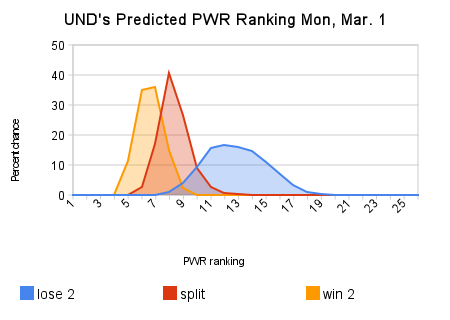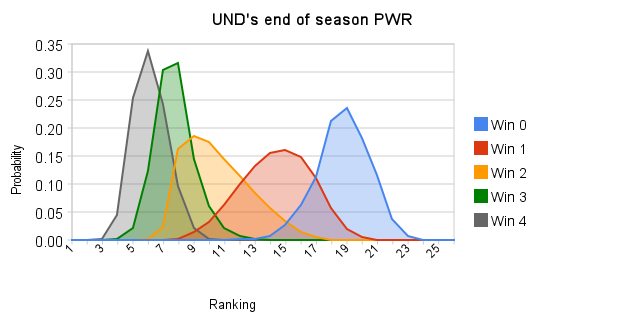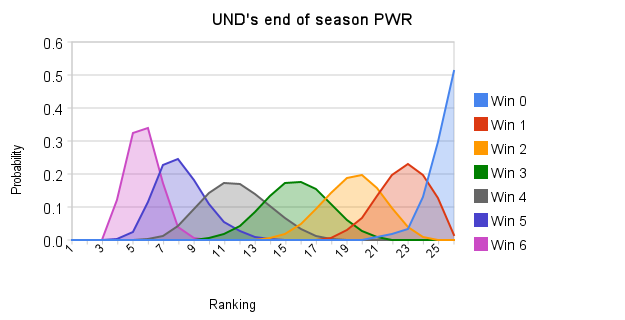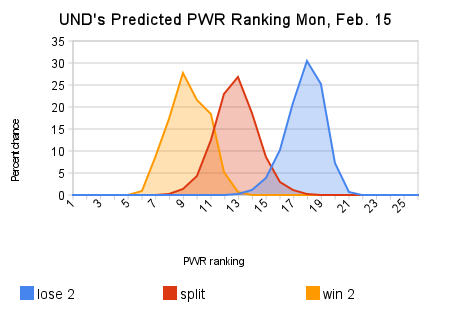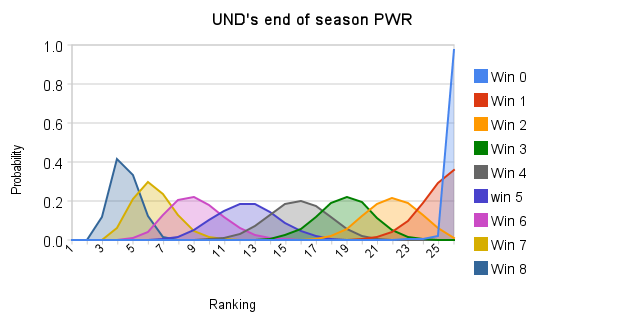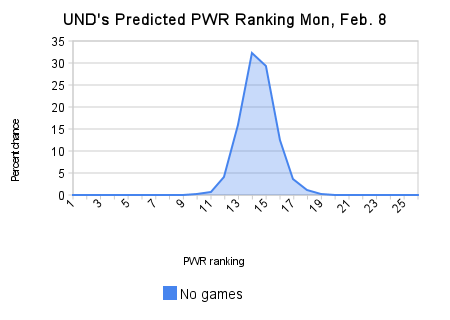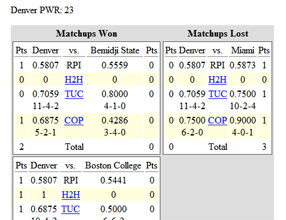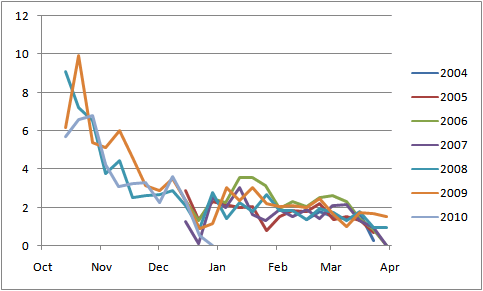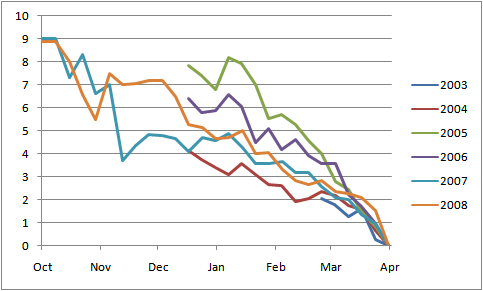It’s that time of year, the season is winding down, and the number of remaining possible outcomes is declining dramatically, such that the PWR is becoming much more predictable. PWR aficionados know that in coming weeks the “You are the Committee” calculators (which allow you to punch in game outcomes and give you back the resultant PWR) will be coming online, so keep an eye out for those.
Last year I assumed this column would quite serving a purpose at that point, but quickly realized that the simulator is actually pretty good at finding the most extreme cases (e.g. UND could still finish #3 with this set of highly improbably outcomes), so this probably isn’t the end of these posts quite yet…
On to business…
Review last week
UND is #6 in PWR having one two. Referring to last week’s forecast, another solid hit.
The main event
This forecast has, by far, the tallest spikes of the season. PWR isn’t moving much this weekend.
How can UND end the weekend at #4
A bonus section… I analyzed those outcomes in which UND ends the weekend as #4, and hence would be slotted as a #1 seed. The following game outcomes were present in every such scenario. For the economists out there, these are necessary but not sufficient conditions (i.e. these outcomes alone won’t guarantee a #4 ranking, but the absence of these outcomes pretty much guarantees UND won’t have a #4 ranking):
UND must sweep Tech
Mankato needs at least 1 point vs SCSU
UNH needs at least 1 point vs BC
Other games to watch
These outcomes seem to help the Sioux in the widest variety of scenarios (that is, not just those in which UND sweeps and is fighting for a #4 ranking):
Mankato sweeping SCSU
Denver sweeping CC
Maine sweeping Mass
Alabama-Huntsville sweeping Bemidji St
UNH sweeping BC
I won’t try to figure out why each of those games matters here, but such discussions often crop up in the PWR Rankings forum thread

